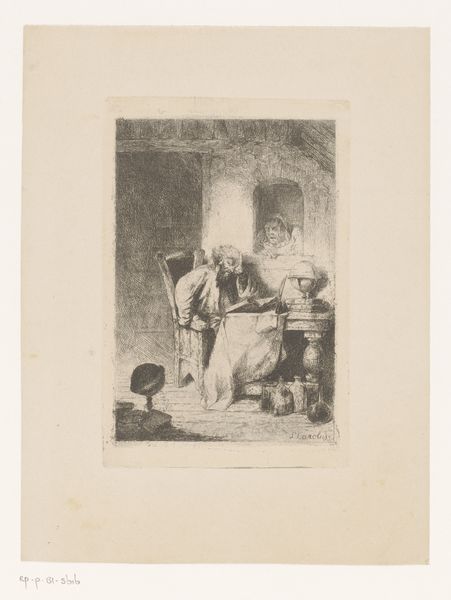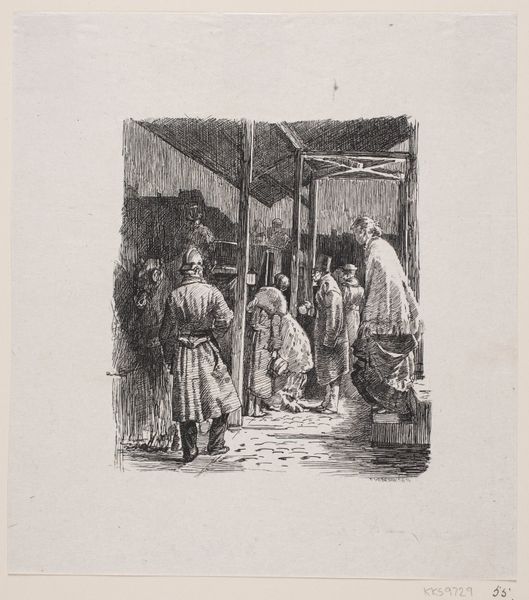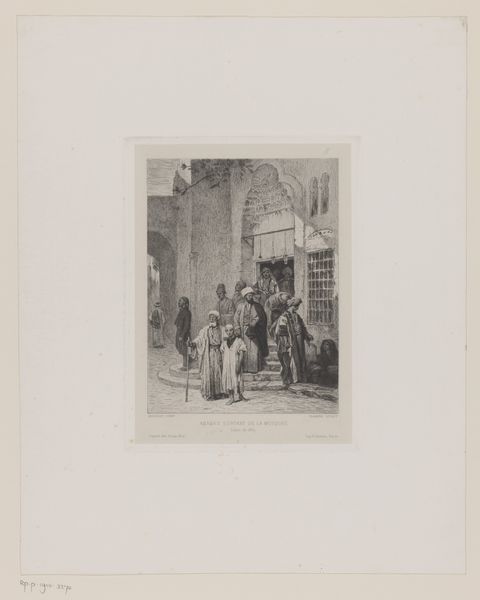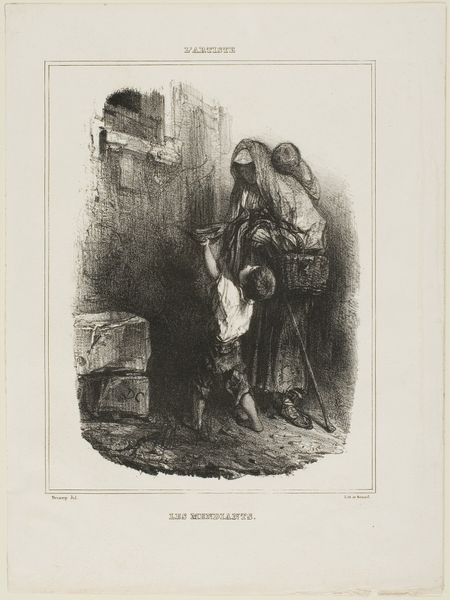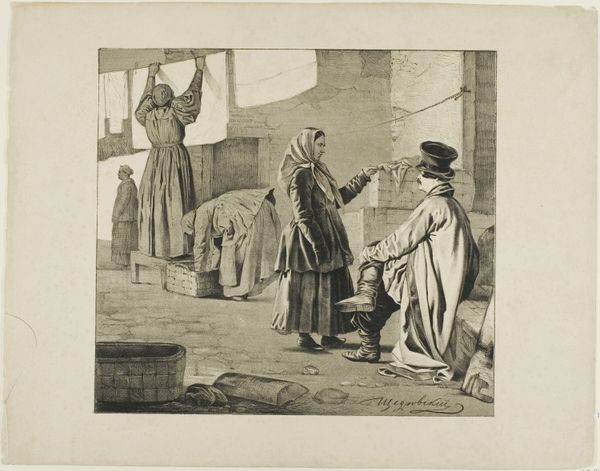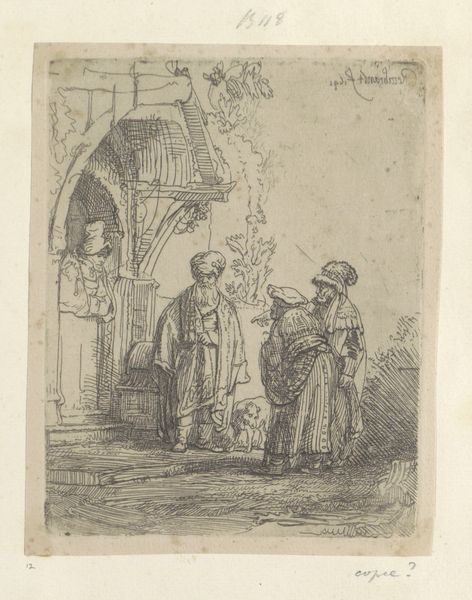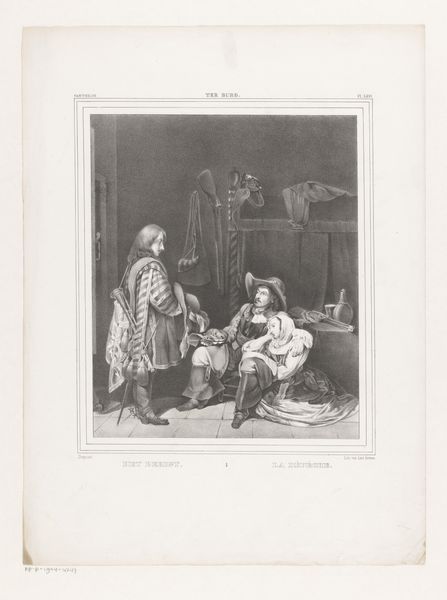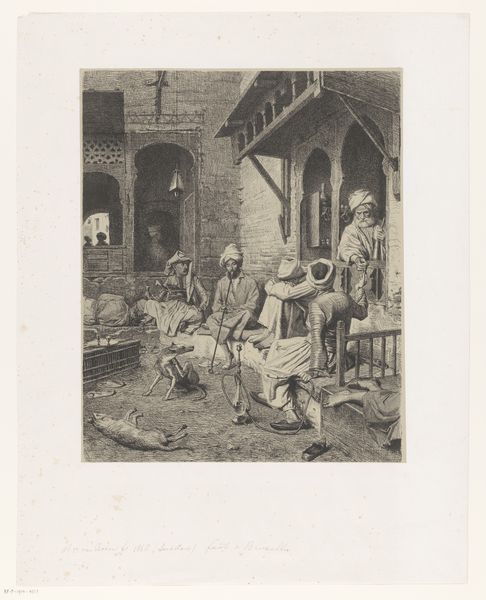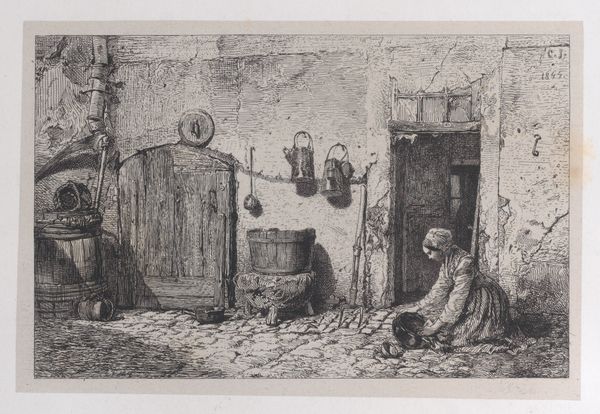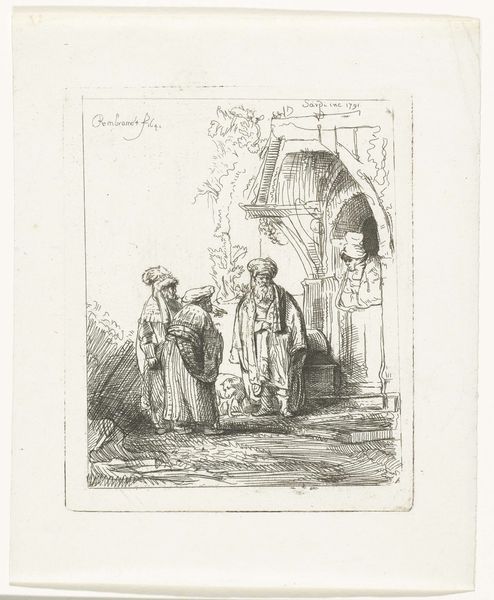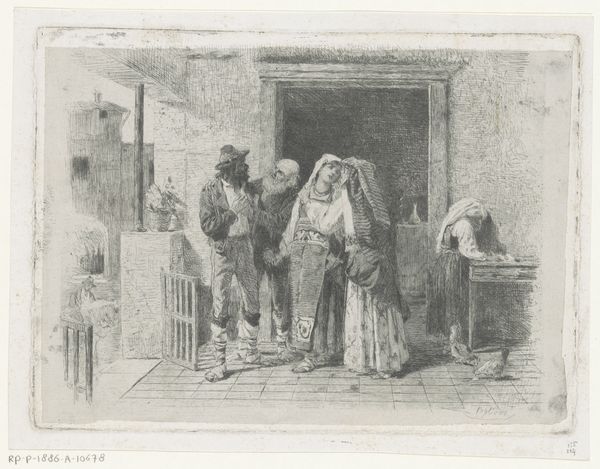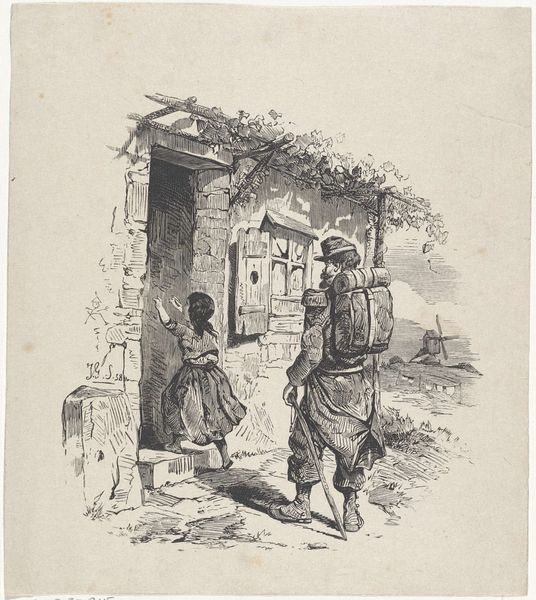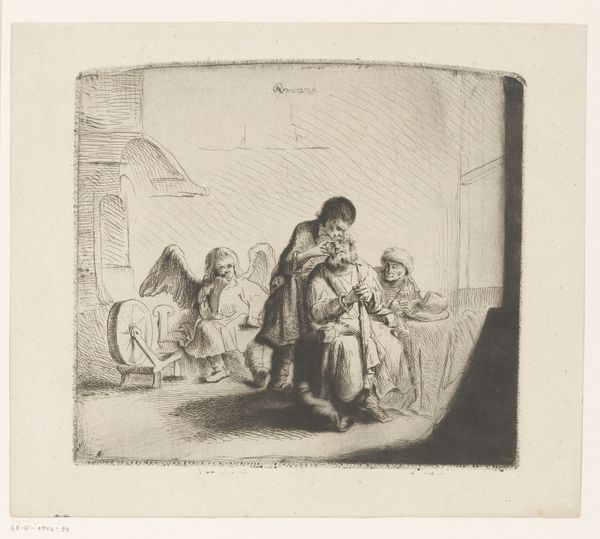
drawing, print, paper, woodcut, wood-engraving, engraving
#
drawing
# print
#
paper
#
pencil drawing
#
woodcut
#
orientalism
#
united-states
#
islamic-art
#
genre-painting
#
wood-engraving
#
engraving
Dimensions: 7 3/8 x 6 5/16 in. (18.73 x 16.03 cm) (image)12 1/8 x 9 5/8 in. (30.8 x 24.45 cm) (sheet)
Copyright: Public Domain
Curator: This untitled print by William B. Closson, created around the 19th century, depicts a genre scene evoking what was then termed ‘Orientalism.’ I find it quietly captivating, don’t you? Editor: It has an immediate starkness, almost like a detailed illustration lifted from a novel. The composition is tight, emphasizing texture – the rug, the clothing, the aged walls... it all screams ‘process’ to me. Wood engraving, etching, who knows how many hours to realize it! Curator: Quite! Closson, a skilled wood engraver, clearly revels in texture. The detail he achieves, with such limited means, transports you to a imagined ‘Orient’ of intricate carpets, gleaming metalwork, and subtly watchful gazes. He transforms simple paper and ink into a little drama, like a tiny stage. What strikes you most about the figures? Editor: The service! Someone is tasked to perform, labor. The slippers casually tossed to the side…a hierarchy is implied. What materials are used for those slippers? The cushions look rather worn. Were these imported or crafted locally with available supplies? These production elements offer interesting sociological commentaries. Curator: I perceive less judgement and more fascination. A hint of fantasy permeates. Consider, however, Closson's American context. The woodcut itself, being relatively affordable, put this 'Oriental' scene into the hands of perhaps, a wider audience back home. To me, it transcends the documentarian nature of the era and offers a glimpse of, perhaps, imagined escape, that he wants to extend to us too. Editor: Hmm. Still, I consider the act of observing and rendering exotic subject matter a specific type of material process; what biases and social position influence production? Who gets to produce, and under what conditions? I suspect his context, while fascinating, also shaped the interpretation, that can reveal certain socioeconomic position, don’t you think? Curator: Undeniably, the production of meaning in art is forever embedded in time and circumstance, always an echo of more than what one can directly know. Ultimately, Closson reminds us that seeing – even through the filter of a nineteenth-century print – can open pathways to curiosity. Editor: Yes, perhaps understanding the conditions of its making and dissemination help us question those avenues a little more thoughtfully. Thank you.
Comments
No comments
Be the first to comment and join the conversation on the ultimate creative platform.
